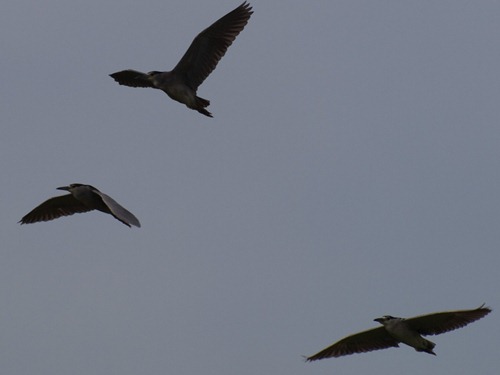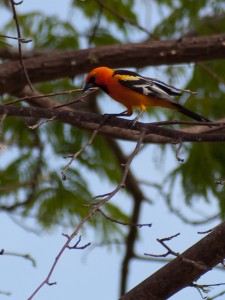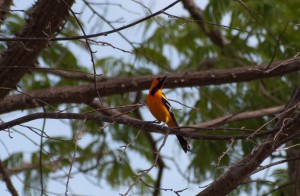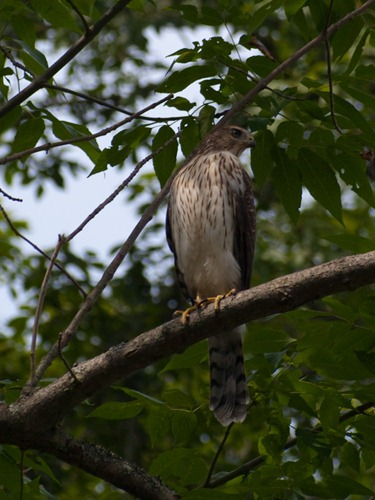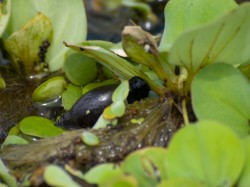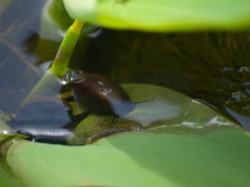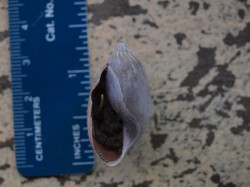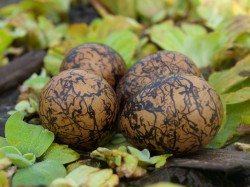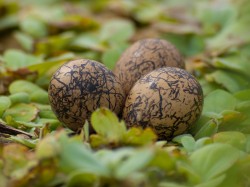Kind of dark, but still cool.
Tag Archives: Birds
Streak-backed oriole
Cooper’s Hawk
Limpkin feeding sites
Last updated:
23 May 2009
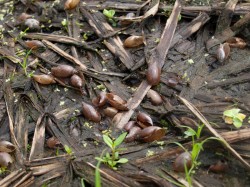
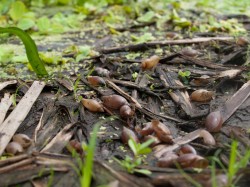
Figures 1 and 2 show a potential limpkin feeding site. I discovered 3 sites, one of which I had observed a limpkin fly away from. Before flying off, the limpkin was within 10 m of me, so I’m fairly confident that it had been standing at that location, but I was unable to observe a limpkin actually feeding at one of these locations. The shells are from a very thin-shelled aquatic snail that appear to be extremely abundant in a variety of vegetation types. I have encountered the snail in Pistia (Figure 3), an unknown emergent plant (see Massive herbivory; Figure 4), and Eichhornia.
The snail has no operculum and, when handled, doesn’t usually escape into its shell. I’m unsure whether or not the snail is a scraper, consuming epiphytic biofilm, or consumes macrophytes proper. If they snails are scrapers and are limpkin prey, there may be an interesting interaction occurring; Apple snails tend to consume macrophytic tissue and scraping snails have been shown to increase macrophyte growth. It may be far fetched, but could apple snail predation effectively farm these snails?
Reduced apple snail density = greater macrophyte biomass = more surface area for biofilm formation = great thinned-shelled snail densities
Other than apple snails at snail kite perches, there was one other species of snail present. Figure 5 shows a snail shell found along with apple snail shells at a snail kite perch. Although this snail may also have been prey, several individuals were found lodged within apple snail shells, so these snails may have died while consuming left over apple snail tissue or attempting to escape drought. The shell is much thicker than the shells found at the limpkin sites discussed in this post, and is not likely the same species.
|
|
Jacana Eggs
I’ve found and have GPS coordinates of 4 Northern Jacana nests, three with four eggs and one with three eggs. I don’t know if they are from the same female, nor have I actually observe a Jacana incubating the eggs. The nests are fairly deep in the Catalina Sector Wetland (CSW) and are not observable from the road through the wetland, but I could observe them within the wetland itself. How is this usually done? The cattail is tall and basically impossible to see through or over.
Is it possible to weigh or gently handle the eggs? I wonder if I can find more nest that are obviously from different females and monitor some measure of fitness for each: number of eggs, weight per egg, hatchling success, hatchling growth rate, etc. These could all vary by habitat perhaps. The two locations pictured in Figures 1 and 2 are dominated by Pistia and are open areas surrounded by cattail. One location is pure cattail, but is open and the nest rests on a bed of decomposing cattail.

